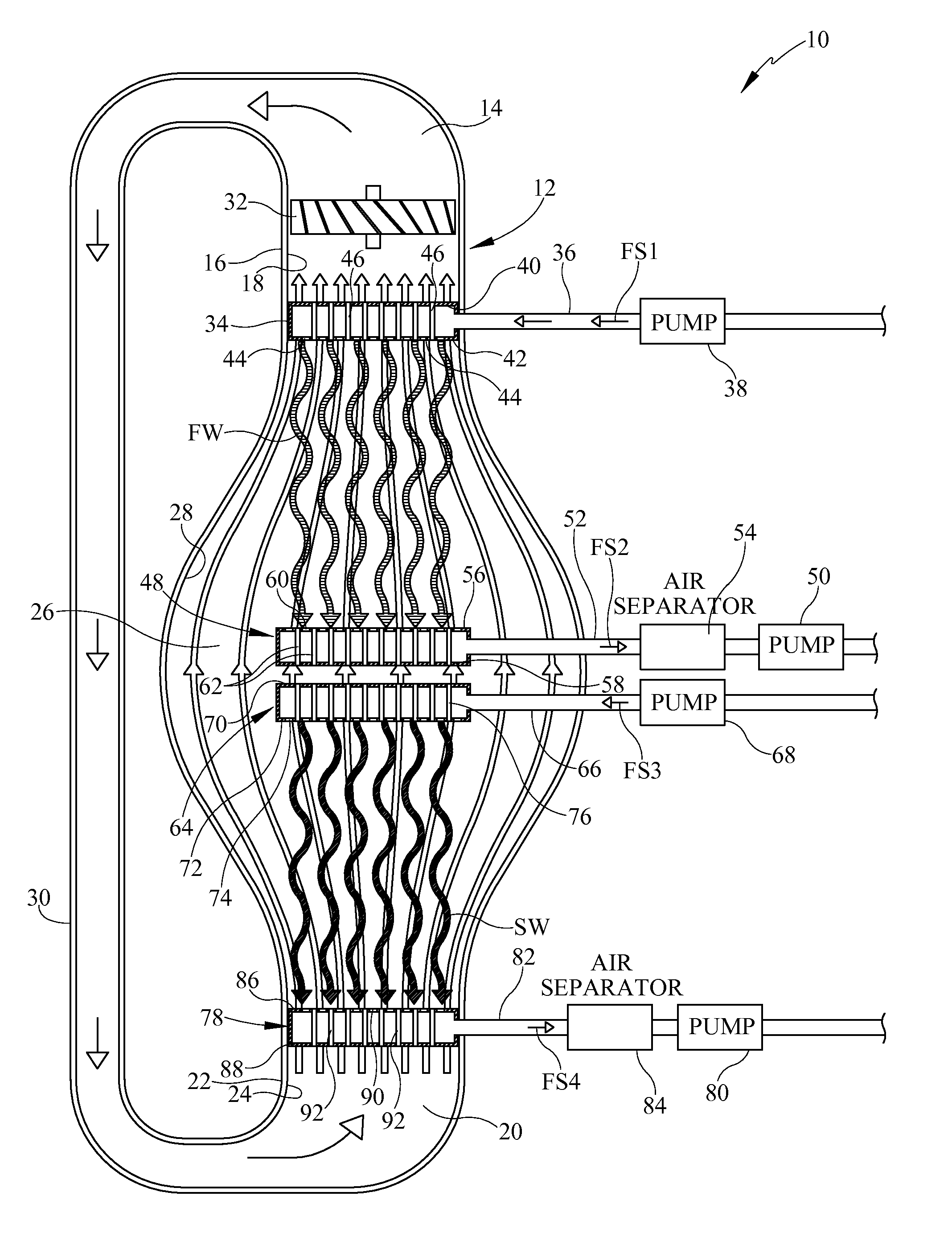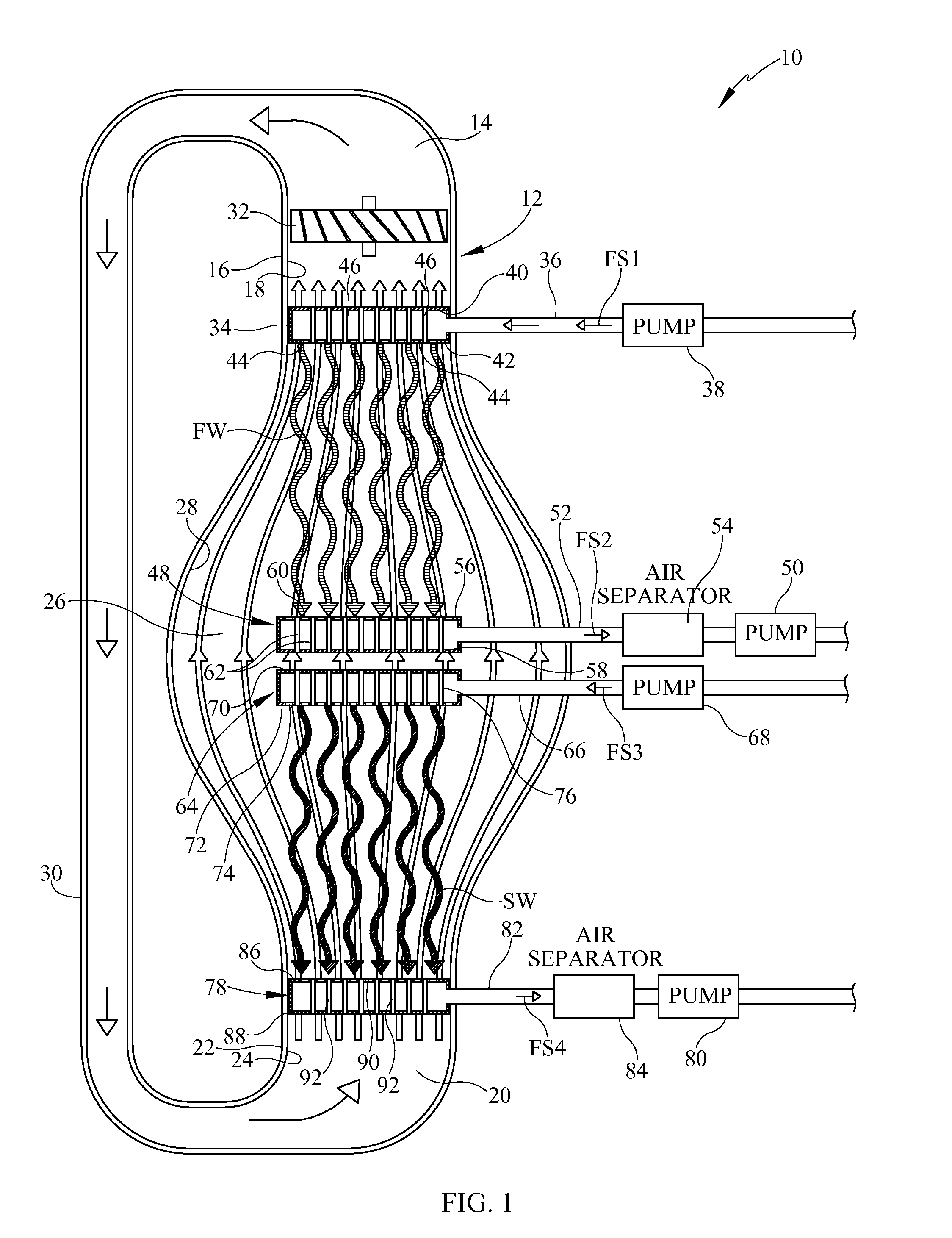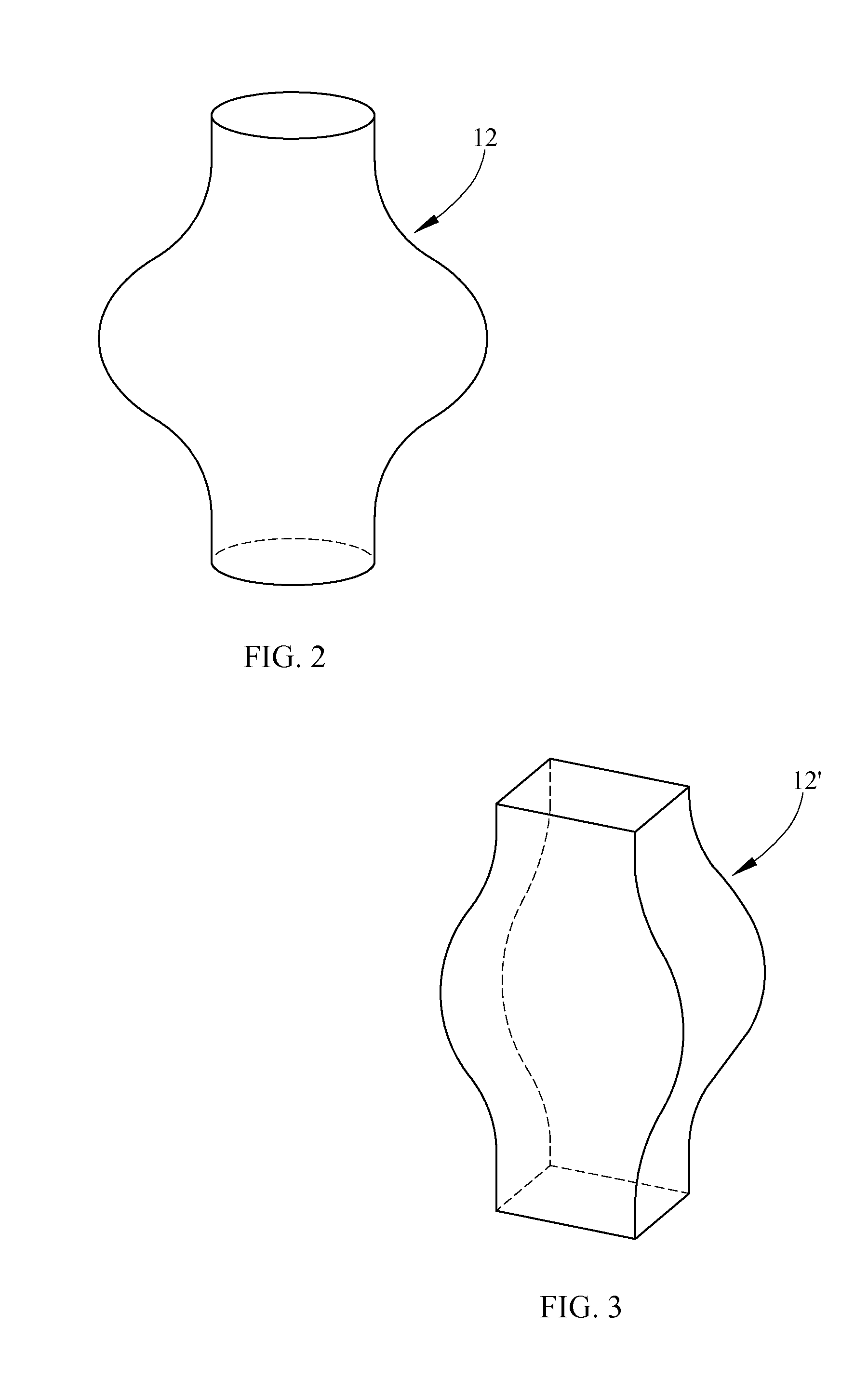Contoured humidification-dehumidification desalination system
a desalination system and humidification technology, applied in distillation separation, chemistry apparatus and processes, separation processes, etc., can solve the problems of sacrificing energy efficiency, requiring frequent replacement of membrane cartridges at great expense, and msf energy costs are the primary cost, etc., to achieve small economic size, improve energy efficiency, and save energy.
- Summary
- Abstract
- Description
- Claims
- Application Information
AI Technical Summary
Benefits of technology
Problems solved by technology
Method used
Image
Examples
Embodiment Construction
[0025]Referring now to the drawings, it is seen that the contoured humidification-dehumidification desalination system of the present invention, generally denoted by reference numeral 10, is comprised of a tower 12 which is a combined evaporator and condenser vessel that has an open top 14 having an upper neck portion 16 depending downwardly therefrom, the upper neck portion 16 having an internal wall 18 that is essentially straight, an open bottom 20 having a lower neck portion 22 depending upwardly therefrom, the lower neck portion 22 having an internal wall 24 that is essentially straight, and a main interior chamber 26 such that the internal wall 28 of the interior chamber 26 is essentially onion shaped in order to balance the thermodynamics of the process completely by facilitating the needed air bypass for a humidification-dehumidification desalination process.
[0026]As seen, a duct 30 fluid flow connects the open top 14 of the tower 12 with the open bottom 20 of the tower 12 w...
PUM
| Property | Measurement | Unit |
|---|---|---|
| temperature | aaaaa | aaaaa |
| thermal energy | aaaaa | aaaaa |
| boiling point | aaaaa | aaaaa |
Abstract
Description
Claims
Application Information
 Login to View More
Login to View More - R&D
- Intellectual Property
- Life Sciences
- Materials
- Tech Scout
- Unparalleled Data Quality
- Higher Quality Content
- 60% Fewer Hallucinations
Browse by: Latest US Patents, China's latest patents, Technical Efficacy Thesaurus, Application Domain, Technology Topic, Popular Technical Reports.
© 2025 PatSnap. All rights reserved.Legal|Privacy policy|Modern Slavery Act Transparency Statement|Sitemap|About US| Contact US: help@patsnap.com



